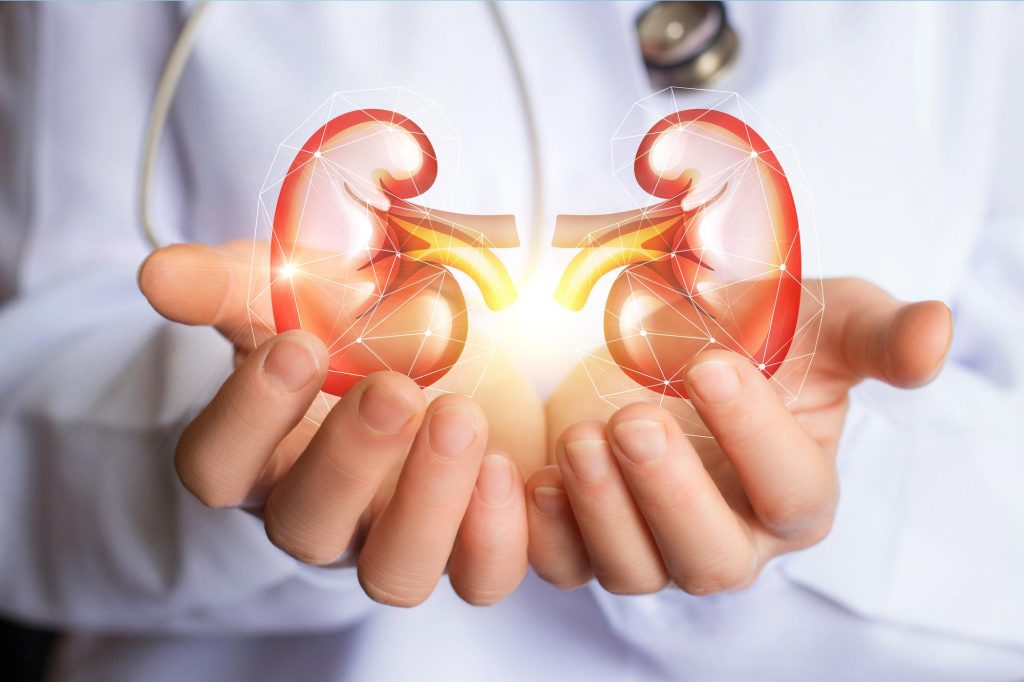Kidney transplantation – Facts & myths
The kidney is a vital organ of the human body. The kidneys’ main role is to filter waste products from the blood before converting them into urine. Other functions include maintaining blood pressure, correcting levels of various chemicals in the body, maintaining bone health, and producing red blood cells.
Chronic kidney disease (CKD) is when kidneys are damaged, and their ability to keep a person healthy is decreased. Currently, there are more than 70 lakh chronic kidney disease patients in India, out of which almost 8 lakh are already at a stage where they need regular dialysis. On top of that, nearly 2.0 to 2.5 lakh people are getting added every year who require regular dialysis (a minimum of 2 to 3 sessions /week) to stay alive. With a rapidly rising diabetic population and India becoming the diabetes capital of the world, these numbers are likely to increase exponentially. The current estimates suggest that in India, at least 1 out of 10 persons will be suffering from kidney failure of some degree by the end of 2035.
Over the last few decades, kidney transplantation has emerged as one of the best treatment options for patients who have reached a stage of advanced kidney failure where they can’t sustain their life without dialysis. Major advancements in transplantation surgical technique and modern immunosuppressive medicines have made it possible for a large majority of kidney transplant recipients to live their lives close to normal.
In the process of kidney transplantation, one kidney from either a living donor (which in a majority of the cases is a family member) or a deceased donor (also known as a cadaveric donor) is harvested and transplanted into the patient’s body. In developed countries, large numbers of renal transplants are done from brain-dead donors. However, living donor kidney transplant in India is most prevalent as the infrastructure and expertise required for cadaveric transplants is not readily available. There are very few centers in India where cadaveric donor transplantation is performed, that too in small numbers in comparison to living donor transplants. For e.g. at PGIMER Chandigarh, which is a premier institute in tertiary healthcare, more than 200 living donor transplants are performed annually which is much more than the number of kidneys transplanted from deceased donors. This number, however, has steadily increased in recent years to more than 20 transplants annually from mere 5-8 cadaveric transplants in the past due to increasing awareness amongst general public.
In addition to improved quality as well as quantity of life, renal transplant is more financially viable option in comparison to dialysis. The cost of monthly treatment for an advanced kidney failure patient including dialysis and medicines ranges between a minimum of Rs 20000 to 30000 every month at private centers which is a lifelong expenditure. Besides, non availability of dialysis in remote areas adds to the woes. Many people need to travel regularly to distant places to get dialysis which adds to the cost of treatment also the loss of their earnings. Most of the government centers do not offer maintenance dialysis facilities to patients. However, kidney transplantation carries onetime cost at the time of surgery which ranges from nearly Rs 2.0 to 2.5 lakh at government centers and approx Rs 4.0 to 7.0 lakhs at different private hospitals.
Unfortunately, a large majority of kidney failure patients are deprived of successful treatment. Poor economic status, lack of infrastructure facilities, scarcity of trained professionals (both medical and paramedical), and above all lack of awareness among people are few of the important reasons for this huge gap between the existing number of kidney failure patients and those receiving adequate treatment in the form of kidney transplantation. Every year, a significant population of these patients dies due to non-accessibility to adequate healthcare.
Because of requirement of a healthy donor and existing gap between demand and supply of eligible donors, kidney transplantation carries a risk of exploitation of poor at the hands of financially affordable people. In the past there have been instances of illegal organ trafficking and existence of racquets of people involved in the commercialization of this treatment modality. To stop commercialization of organ transplantation there is need for regulation and also developing infrastructure to increase the cadaveric donor transplantation. A holistic approach is required at different levels including central & state governments and healthcare agencies to make kidney transplantation accessible to large number of patients suffering from this deadly disease.
Dr. Ajay Goyal
MD DM (PGI Chd)
Consultant Nephrologist & Transplant Physician
Chandigarh





